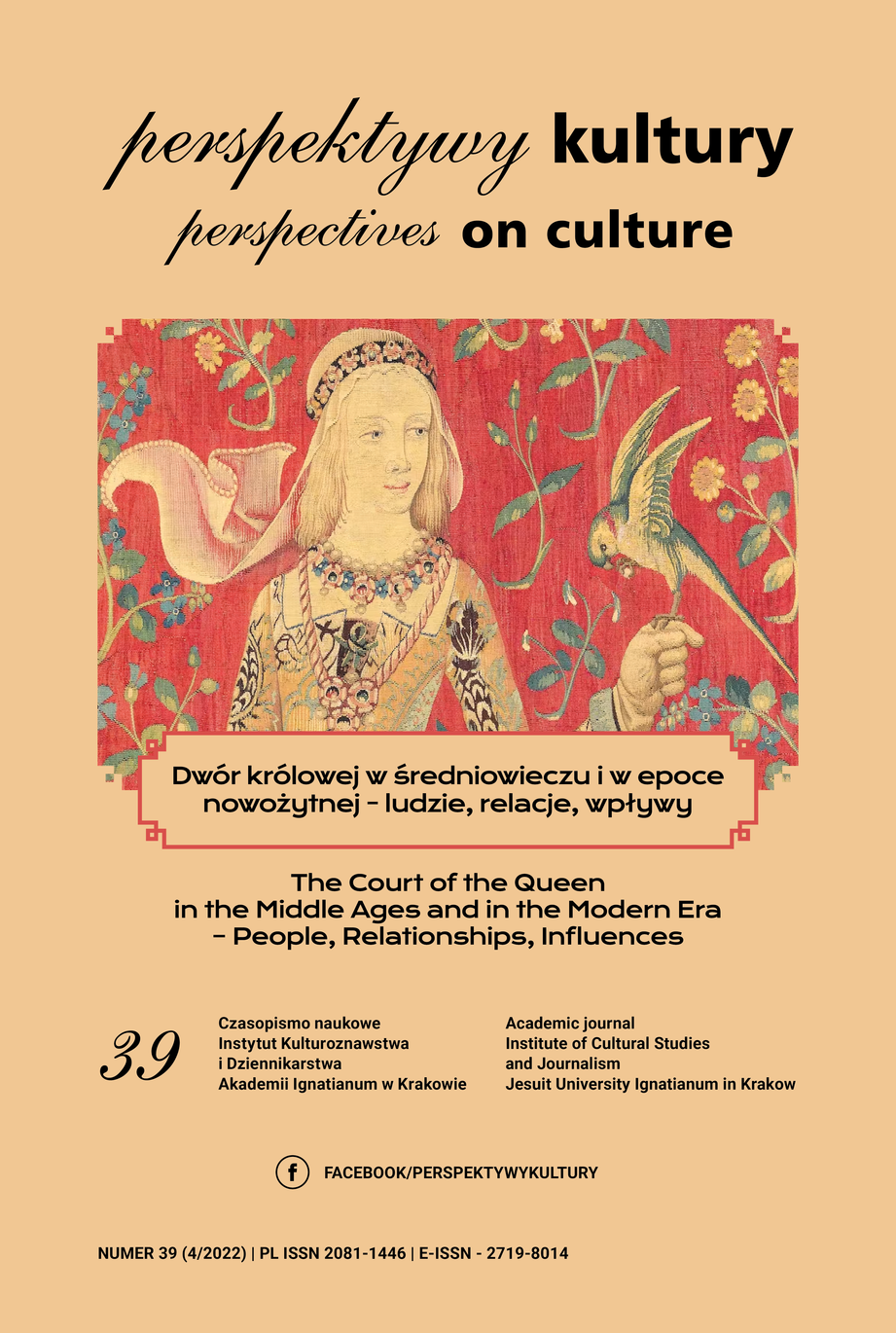Kobiecy głos w męskocentrycznym świecie
Dwór sułtański we wspomnieniach córek Abdülhamida II
Abstrakt
Artykuł przedstawia życie na dworze sułtana osmańskiego Abdülhamida II na przełomie XIX i XX w., opisane z punktu widzenia jego dwóch córek: Şadiye Osmanoğlu (1886–1977) i Ayşe Osmanoğlu (1887–1960). Obie, niezależnie od siebie, opublikowały wspomnienia w latach 50. i 60. XX w., najpierw w prasie, później w formie książkowej. Ostatecznie ich autobiografie ukazały się pod tym samym tytułem: Babam Abdülhamid [Mój ojciec Abdülhamid]. Analiza literaturoznawcza autobiografii dotyczyła kategorii autonarracji. Księżniczki spisały swe wspomnienia jako siedemdziesięcioletnie kobiety, mające za sobą doświadczenie wygnania z kraju i wieloletniej tułaczki, wymagającej dużej niezależności i samodzielności. Mimo to relacjonując swą młodość, spędzoną w sułtańskim haremie, przyjęły perspektywę młodych dziewczyn, zależnych w pełni od woli ojca i wierzących w wyznawane przez niego wartości. Deklarując zadowolenie z życia w tym męskocentrycznym świecie, traktowały jako naturalny porządek oparty na hierarchii, podporządkowując się pałacowej etykiecie. Dopiero miejsca przemilczane i niedomówienia, szczególnie dotyczące sfery emocji, wydobyte w procesie analizy autobiografii, pokazały, że autonarracja Şadiye i Ayşe Osmanoğlu, choć starannie kreowana, nie zawsze była spójna. Wpojone w dzieciństwie zasady, pragnienie obrony świata wartości porzuconego w czasach Republiki oraz zwykła tęsknota za wygodną i bezpieczną młodością w haremie sprawiły, że księżniczki nie zdecydowały się na to, by ich głos wybrzmiał mocniej.
Bibliografia
Burzyńska, A. (2008). Idee narracyjności w humanistyce. W: B. Janusz, K. Gdowska, B de Barbaro (red.), Narracja. Teoria i praktyka. Kraków: Wydawnictwo Uniwersytetu Jagiellońskiego, 21-36.
Czerska, T. (2011). Między autobiografią a opowieścią rodzinną. Kobiece narracje osobiste w Polsce po 1944 roku w perspektywie historyczno-kulturowej. Szczecin: Wydawnictwo Naukowe Uniwersytetu Szczecińskiego.
Dervişcemaloğlu, B. (2017). Feminist Anlatıbilim Üzerine. Yeni Türk Edebiyatı, nr. 16, 61-79.
Ekinci, E.B. (2017). Sultan Abdülhamid’in Son Zevcesi. Behice Sultan’la Altı Ay. İstanbul: Timaş Yayınları.
Filipowska, S. (2017). Obraz dziewiętnastowiecznego Stambułu w polskiej i tureckiej literaturze wspomnieniowej. Kraków: Księgarnia Akademicka.
Gutkowska, B. (2005). Odczytywanie śladów. W kręgu dwudziestowiecznego autobiografizmu. Katowice: Wydawnictwo Uniwersytetu Śląskiego.
Michalska-Krajewska, W. (2015). Tajemnice haremu. Kobieta w świecie islamu. Warszawa: Bellona.
Oleś, P. (2008). Autonarracyjna aktywność człowieka. W: B. Janusz, K. Gdowska, B de Barbaro (red.), Narracja. Teoria i praktyka. Kraków: Wydawnictwo Uniwersytetu Jagiellońskiego, 37-52.
Osmanoğlu, A. (1960). Babam Abdülhamid. İstanbul: Güven Yayınevi.
Osmanoğlu, Ş. (2011). Babam Abdülhamid. Saray ve Sürgün Yılları. İstanbul: Timaş Yayınları.
Peirce, L.P. (2008). Beyond Harem Walls. Ottoman Royal Women and the Exercise of Power W: A. Walthall (red.), Servants of the Dynasty: Palace Women in World History. Berkeley, Los Angeles, London: University of California Press, 81-95.
Pekaniec, A. (2013). Czy w tej autobiografii jest kobieta? Kobieca literatura dokumentu osobistego od początku XIX wieku do wybuchu II wojny światowej. Kraków: Księgarnia Akademicka.
Pekaniec, A. (2014). Literatura dokumentu osobistego kobiet. Ewolucja teorii, zmiany praktyk lekturowych. Autobiografia, nr 1(2), 13-28.
Rodak, P. (2009). Prawda w dzienniku osobistym. Teksty Drugie, nr 4, 23-38.
Rosner, K. (2003). Narracja, tożsamość i czas. Kraków: UNIVERSITAS.
Walthall, A. (2008). Introducing Palace Women. W: A. Walthall (red.), Servants of the Dynasty: Palace Women in World History. Berkeley, Los Angeles, London: University of California Press, 1-21.
Zając, G. (2008). Smutna ojczyzna i ja smutny… Kręgi literackie epoki Abdülhamita II w świetle tureckiej autobiografii. Kraków: Księgarnia Akademicka.
Zając, G. (2013). Ciało twoje, kości moje… Rodzina i szkoła epoki Abdülhamita II w świetle tureckiej autobiografii. Kraków: Księgarnia Akademicka.
Copyright (c) 2022 Perspektywy Kultury

Utwór dostępny jest na licencji Creative Commons Uznanie autorstwa – Bez utworów zależnych 4.0 Międzynarodowe.
Autor, zgłaszając swój artykuł, wyraża zgodę na korzystanie przez Wydawnictwo Uniwersystet Ignatianum z utworu na następujących polach eksploatacji:
- utrwalania utworu w formie papierowej, a także na nośniku cyfrowym lub magnetycznym;
- zwielokrotnienia utworu dowolną techniką, bez ograniczenia ilości wydań i liczby egzemplarzy;
- rozpowszechniania utworu i jego zwielokrotnionych egzemplarzy na jakimkolwiek nośniku, w tym wprowadzenia do obrotu, sprzedaży, użyczenia, najmu;
- wprowadzenia utworu do pamięci komputera;
- rozpowszechniania utworu w sieciach informatycznych, w tym w sieci Internet;
- publicznego wykonania, wystawienia, wyświetlenia, odtworzenia oraz nadawania i reemitowania, a także publicznego udostępniania utworu w taki sposób, aby każdy mógł mieć do niego dostęp w miejscu i czasie przez siebie wybranym.
Wydawca zobowiązuje się szanować osobiste prawa autorskie do utworu.





